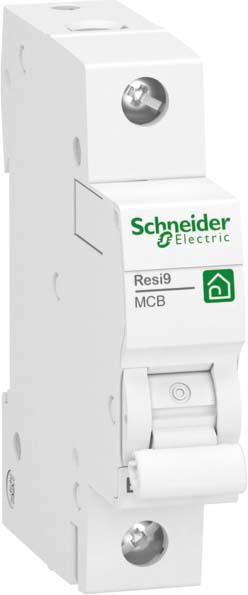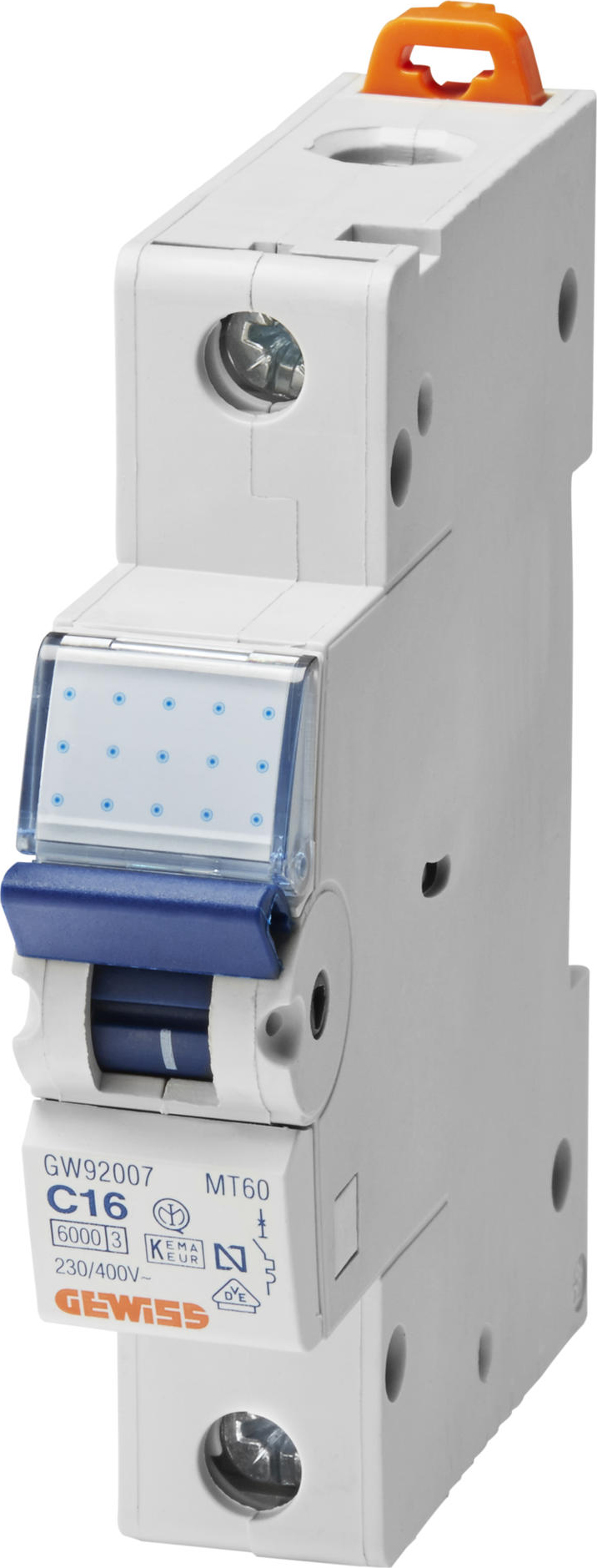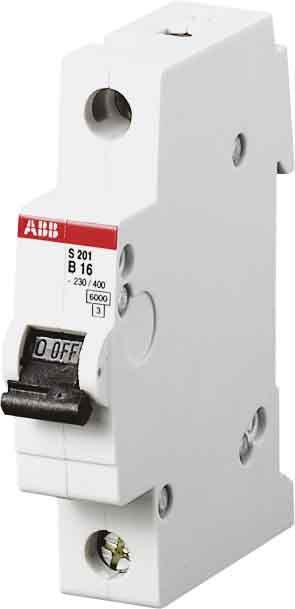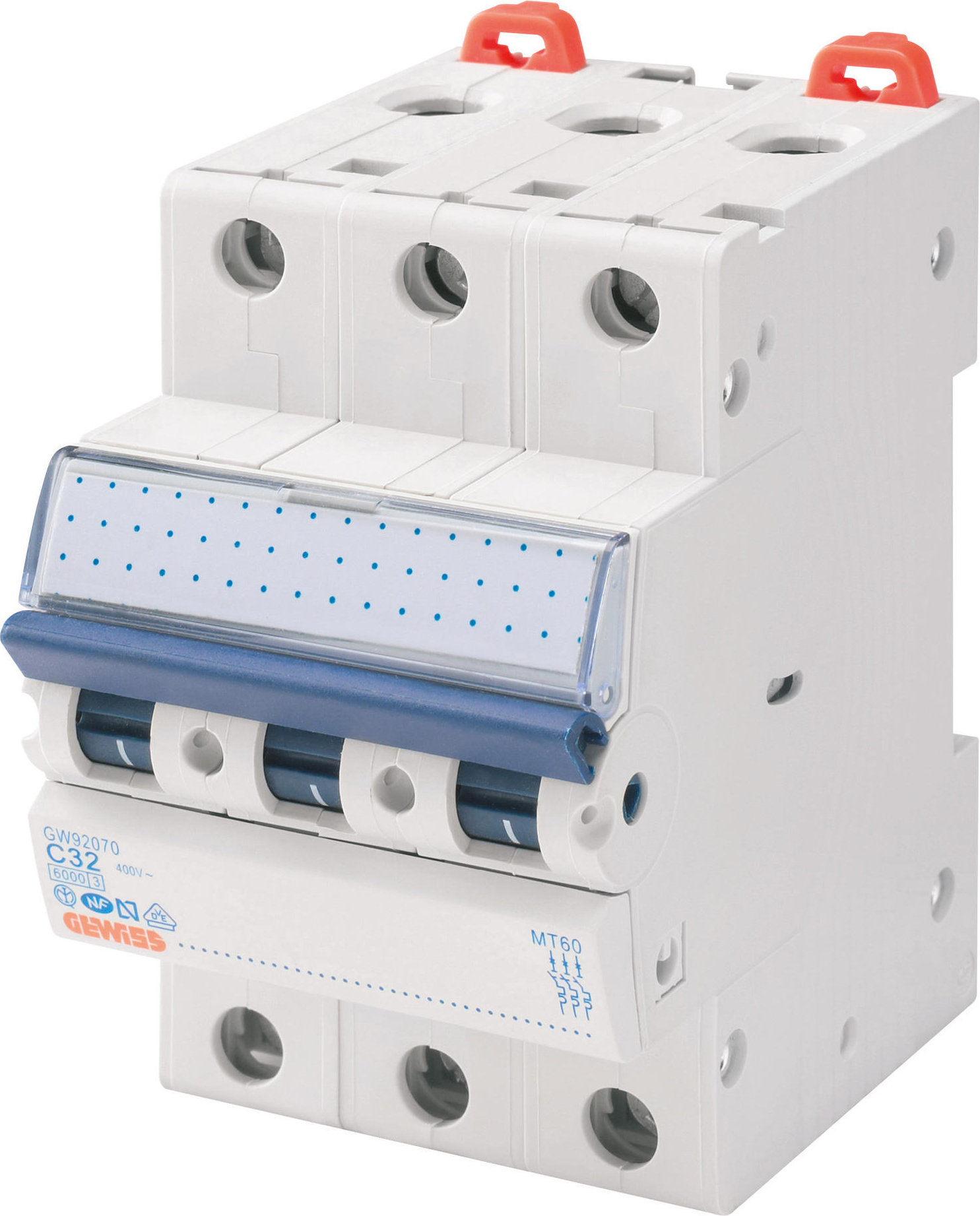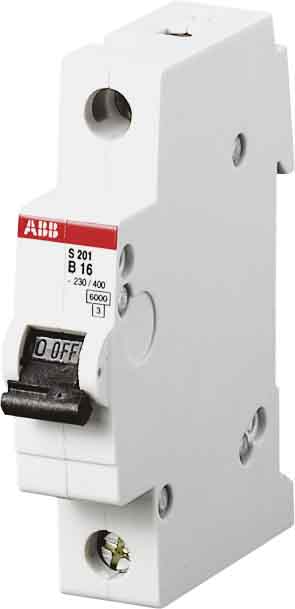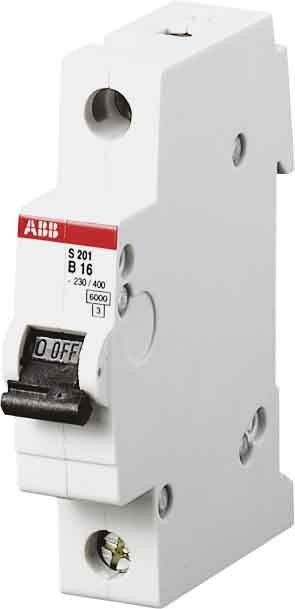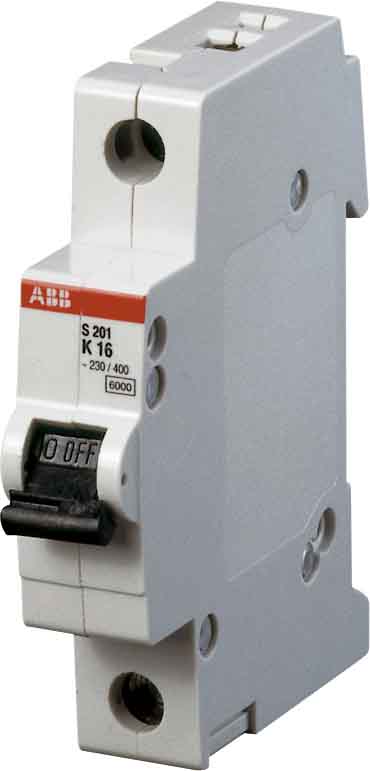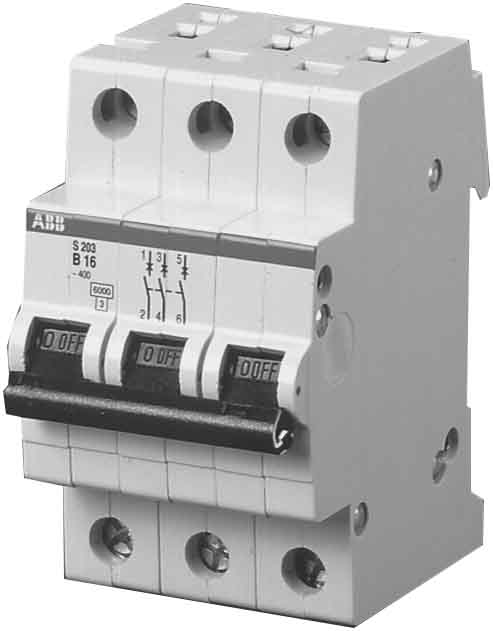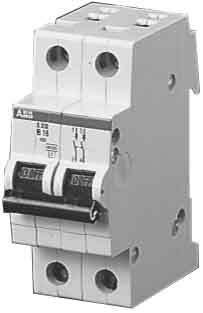Circuit breaker
A circuit breaker, also known as an automatic circuit breaker, is used to protect circuits from overloads and short circuits by interrupting the flow of current as soon as a hazard due to excessive currents is detected. These protective devices are standard in modern electrical installations and ensure safety in electrical systems. In our range, you will find numerous miniature circuit breakers from well-known brands, including those with VDE certification. Discover more now!

- Comprehensive advice & support
- over 10,000 articles in the shop
- Shipping in 24 hours
- thousands of satisfied customers

KATHRIN BRANDT
Employee Purchasing from TroisdorfGreat advice and friendly service. I was helped immediately and competently with any questions. Gladly again.

OMAR NASER
Office Manager from Frankfurt a.M.Goods are well packaged and arrive safely, which is important to me. My mail was answered immediately.

RAINER SEIDEL
Master carpenter from WiesbadenHad to replace a lamp, but the same was no longer available. Great advice, found a suitable replacement and delivered it quickly.
What is a miniature circuit breaker?
A miniature circuit breaker, abbreviated to circuit breaker, is a safety device for electrical installations and devices that are used in domestic installations, for example. They are also known as circuit breakers or simply automatic circuit breakers. They are used to protect against overloads and short circuits and are an essential component for securing power networks. By interrupting the normal flow of current as soon as they detect abnormal current levels that exceed a multiple of the permissible rated current, they can minimize damage to electrical systems as well as the risk of fire and accidents. Circuit breakers are the perfect solution for the permanent protection of electrical installations, as there is no need for manual replacement as with normal fuses.
Find the right miniature circuit breaker for your application in our online store now!
How does a miniature circuit breaker work?
The current flow is continuously monitored by the circuit breaker. The device can react to excessive current with an electromechanical tripping characteristic. There is a predetermined limit value for this. Up to this value, the current can simply flow normally through the switch. However, if the limit value is exceeded, the tripping mechanism of the circuit breaker takes effect. There are two common types for this: thermal tripping and electromagnetic tripping. Thermal tripping uses a bimetallic component that bends when heated by excessive currents. This allows the circuit breaker to trip and interrupt the circuit. Magnetic tripping is mainly used in the event of short circuits when high currents, i.e. short-circuit currents, suddenly occur. An electromagnetic coil is used to generate a strong magnetic field, which then activates the tripping characteristic and thus interrupts the circuit.
How a circuit breaker is constructed
A circuit breaker has a complex design and consists of several components. The robust housing provides protection against external influences and damage. In addition, the housing also ensures user safety. The housing of the circuit breaker is usually made of plastic or another insulating material. Inside the circuit breaker you will find the switching contact. It closes the circuit during normal operation. Should a malfunction occur, this contact can be opened quickly to interrupt the current flow.
Another component of the circuit breaker is the bimetallic strip. This serves as overload protection. This is because it heats up during overloads and bends as a result of the heat build-up. The bending then causes the circuit to be interrupted as the switching contact is opened. The release coil plays an important role in short circuits. If a sudden high current is detected, the release coil generates a strong magnetic field, which also opens the switching contact of the circuit breaker.
The manual reset lever is necessary to restart the circuit after tripping. In addition, the switch lever often has a switch position indicator and a labeling window for clear identification. There are also terminal strips at the inputs and outputs of the switch, which are used to attach the electrical cables. You will also find markings and information on the rated current, rated breaking capacity, rated current and specific characteristics on the housing of a miniature circuit-breaker. You must observe these when installing a switch in an electrical system.
Some circuit breakers also have auxiliary switches or quick-release fasteners for mounting on rails in the distribution board. This not only makes installation easier, but also maintenance.
Why a miniature circuit breaker is important
A miniature circuit breaker is important for several reasons. It protects against overloads and short circuits and therefore also provides line protection for the electrical lines. A circuit breaker also increases system safety as well as the safety and service life of electronic devices. In the event of a fault, people in the vicinity of industrial electrical systems, for example, are protected. The risk of injuries and fires is also reduced with a circuit breaker. In addition, miniature circuit breakers can be easily reset. This makes maintenance and troubleshooting easier. Costs and time can be saved compared to fuses that have to be reset after every trip. In addition, the miniature circuit breaker is prescribed in many countries according to the applicable electrical installation standards. For these reasons, you should not do without a miniature circuit breaker.
The different types of miniature circuit breakers
Circuit breakers are available in different types that meet specific requirements and are used for numerous applications such as in residential buildings for normal domestic installations or industrial systems with high starting currents from motors and capacitors. The type is determined by the characteristic of the tripping.
The following types are among the most common types:
Type B: Type B circuit breakers are popularly used in residential buildings, for example to protect various groups of lamps or electronic devices. Type B provides protection against overload currents that are three to five times the rated current.
Type C: Type C is often used in commercial or industrial installations, for example in devices such as motors that generate high current peaks when starting. The circuit breaker trips when the current reaches approximately five to ten times the rated current of the breaker.
Type D: Type D switches are used for applications that have very high starting currents. These can be systems with transformers or large motors, for example. They trip as soon as the current is ten to twenty times the rated current.
Type K: Type K is also used for high inrush currents. However, these are below the values of type D. They trip at eight to twelve times the rated current.
Type Z: If very sensitive devices are connected to the circuit, the type Z switch is a good choice. These include computers or electronic precision instruments, for example. The tripping current only needs to be slightly higher than the rated current.
Buy miniature circuit breakers at WATT24
Discover a wide selection of miniature circuit breakers from various brands and models in our WATT24 online store. Order from the comfort of your own home and benefit from direct delivery to your doorstep. You will also find an extensive range of accessories for electrical installations and lighting technology.
At WATT24, we also attach great importance to quality, reliability and first-class customer service to enable you to select the ideal product quickly and efficiently. Choose WATT24 and enjoy numerous benefits:
- Fast delivery - Your order will be shipped immediately, so you don't have to wait long.
- Simple and secure ordering process - Our ordering process is intuitive and secure to ensure your protection.
- Extensive product range - Our wide range of products covers all your specific requirements.
- Outstanding brand quality - We only stock products from renowned manufacturers.
Find the ideal miniature circuit breaker now and order online directly from WATT24!
FAQ: Frequently asked questions about the miniature circuit breaker
What is the difference between a circuit breaker and a miniature circuit breaker?
The terms automatic circuit breaker and miniature circuit breaker are used interchangeably. This is because both terms refer to the device that automatically interrupts a circuit in the event of an overload.
What happens if the circuit breaker has tripped?
As soon as the circuit breaker trips, it immediately interrupts the circuit to protect against damage and danger. It disconnects the electrical connection in the switch either due to an overload or a short circuit. If a tripping current has occurred, the cause must be found and rectified. The circuit breaker can then be reset to re-establish the circuit.
What is the difference between a reset lever and a switching lever?
The reset lever in a circuit breaker is designed to reset the device after tripping. Sometimes it is simply referred to as a switch lever because it can set the circuit breaker to the "on" or "off" state. However, there is no difference between the two terms in the context of the circuit breaker.
What is an MCB?
An MCB or "Miniature Circuit Breaker" is a small circuit breaker. It can also be used to protect a circuit from damage.
What is the difference between single-pole and multi-pole circuit breakers?
Single-pole and multi-pole circuit breakers are used to provide protection against overloads and short circuits in circuits. However, single-pole circuit breakers can only protect a single circuit or a single phase against overloads and short circuits. Multi-pole circuit breakers, for example 2-pole, 3-pole or 4-pole circuit breakers, can monitor or protect several phases or circuits with several phases simultaneously.


